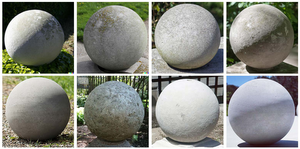Information
- Publication Type: Bachelor Thesis
- Workgroup(s)/Project(s):
- Date: March 2024
- Date (Start): 2023
- Date (End): 25. March 2024
- Matrikelnummer: 11705362
- First Supervisor: Michael Wimmer
Abstract
Lighting has a major impact on the mood of an indoor scene. This plays an important role in interior design. The way a room is lit affects the people in it. While a human can understand this concept and express how a scene feels to them, a computer cannot provide the same type of analysis at the moment. To provide a solution for this, this thesis seeks to implement a convolutional neural network to employ deep learning and classify scenes by their lighting mood. To this extent I created a data set consisting of images representing different lighting moods. The deep learning technique I used is transfer learning in which an already pre-trained network, in this case VGG16, is used. At first I tried a multi-class approach in which all classes are evaluated by one classifier, but later I moved to a binary classifier structure in which the classifier only learns and predicts if an image belongs to one given class or not. This lead to promising results and provides ground to improve upon in future work.Additional Files and Images
Weblinks
No further information available.BibTeX
@bachelorsthesis{steinkellner-2024-dll,
title = "Deep Learning for Lighting Evaluation",
author = "Michael Steinkellner",
year = "2024",
abstract = "Lighting has a major impact on the mood of an indoor scene.
This plays an important role in interior design. The way a
room is lit affects the people in it. While a human can
understand this concept and express how a scene feels to
them, a computer cannot provide the same type of analysis at
the moment. To provide a solution for this, this thesis
seeks to implement a convolutional neural network to employ
deep learning and classify scenes by their lighting mood. To
this extent I created a data set consisting of images
representing different lighting moods. The deep learning
technique I used is transfer learning in which an already
pre-trained network, in this case VGG16, is used. At first I
tried a multi-class approach in which all classes are
evaluated by one classifier, but later I moved to a binary
classifier structure in which the classifier only learns and
predicts if an image belongs to one given class or not. This
lead to promising results and provides ground to improve
upon in future work.",
month = mar,
address = "Favoritenstrasse 9-11/E193-02, A-1040 Vienna, Austria",
school = "Research Unit of Computer Graphics, Institute of Visual
Computing and Human-Centered Technology, Faculty of
Informatics, TU Wien ",
URL = "https://www.cg.tuwien.ac.at/research/publications/2024/steinkellner-2024-dll/",
}

 thesis
thesis
